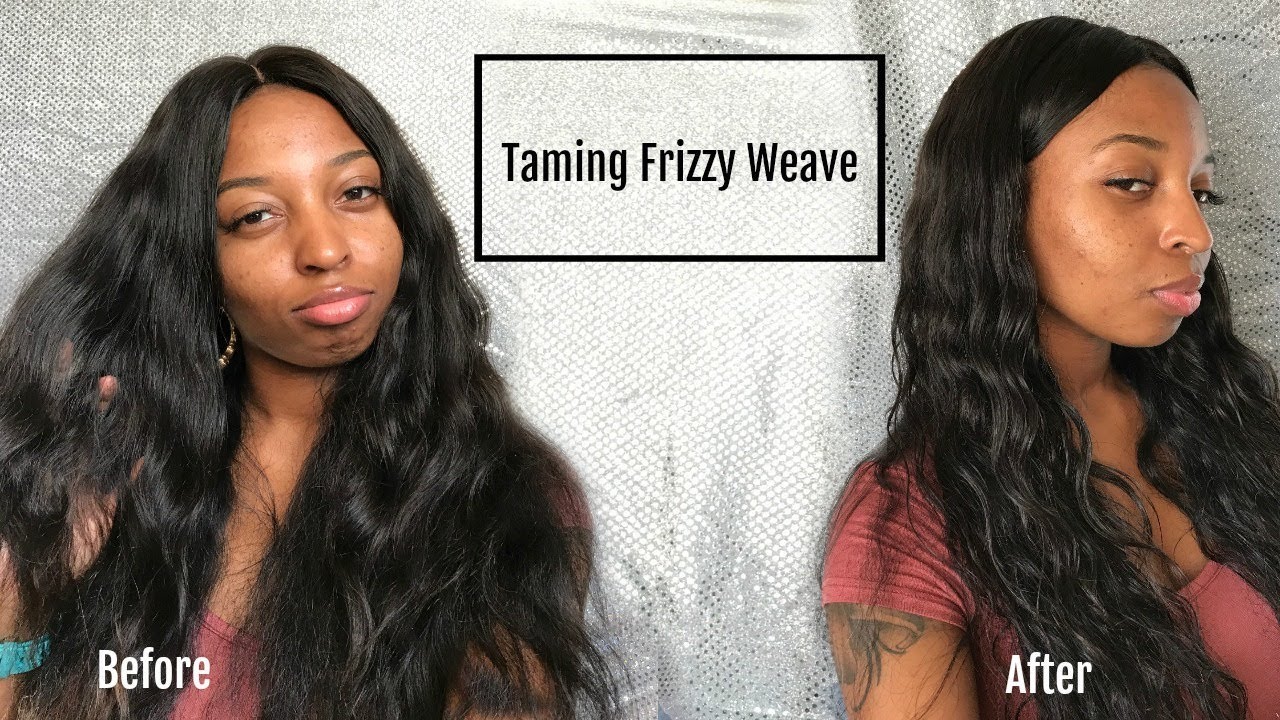Have you recently purchased a human hair wig and noticed that it has become frizzy? Don’t worry, fixing a frizzy human hair wig is easier than you might think. With some simple techniques and a little bit of patience, you can restore your wig to its beautiful, natural-looking state. In this article, we will explore various methods to help you fix a frizzy human hair wig and get it looking flawless once again. Whether you’re a wig enthusiast or someone experiencing hair loss, these tips will help you maintain the longevity and quality of your human hair wig. So, let’s dive in and discover how to fix a human hair wig that’s frizzy!
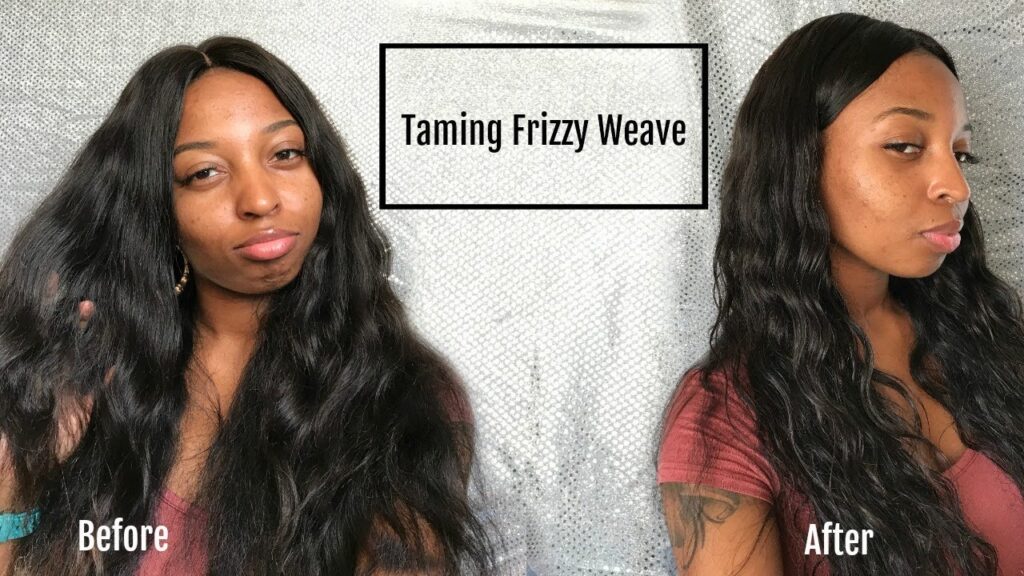
Understanding Frizz in Human Hair Wigs
Frizz is a common issue that human hair wig wearers experience. It refers to the unruly, tangled, and frayed appearance of the wig strands, which can diminish its overall aesthetic appeal. Understanding the causes and effects of frizz is crucial in finding effective solutions and preventing further damage to your human hair wig.
Causes of Frizz in Human Hair Wigs
Several factors can contribute to the frizziness of human hair wigs. One prevalent cause is humidity. Just like natural hair, human hair wigs are prone to absorbing moisture from the environment, which can cause the strands to swell and become frizzy. Additionally, improper storage and maintenance, excessive heat styling, and using the wrong hair care products can also lead to frizz. It’s essential to address these causes to maintain the quality and appearance of your wig.
Effects of Frizz on Human Hair Wigs
Frizz can significantly impact the overall look and longevity of your human hair wig. It can make the wig appear unkempt, dull, and less natural. Frizz can also lead to further tangling and breakage of the strands, which can result in a shorter lifespan for your wig. By understanding the effects of frizz, you can take the necessary steps to prevent and fix it.
Preventing Frizz in Human Hair Wigs
Prevention is key when it comes to maintaining the quality and appearance of your human hair wig. Here are some essential tips to help you prevent frizz:
Proper Storage and Maintenance
Storing your wig correctly when not in use is crucial in preventing frizz. Keep your wig on a wig stand or a mannequin head to help maintain its shape and prevent tangling. Avoid leaving your wig in direct sunlight or in areas with high humidity, as this can cause the strands to absorb moisture and become frizzy. Additionally, proper washing, conditioning, and detangling of the wig are essential maintenance steps to prevent frizz.
Avoiding Heat Damage
Excessive heat styling, such as using high-temperature flat irons or curling irons, can cause the strands of your wig to become dry, brittle, and frizzy. To prevent heat damage, use heat protectant products before styling. It’s also advisable to limit the use of heat styling tools and opt for heat-free styling methods whenever possible.
Using the Right Hair Care Products
Using the right hair care products specifically designed for human hair wigs is vital in preventing frizz. Look for sulfate-free shampoos and conditioners that are gentle yet effective in cleansing and moisturizing the wig strands. Additionally, using lightweight leave-in conditioners or serums formulated for wigs can help keep the hair hydrated and minimize frizz.
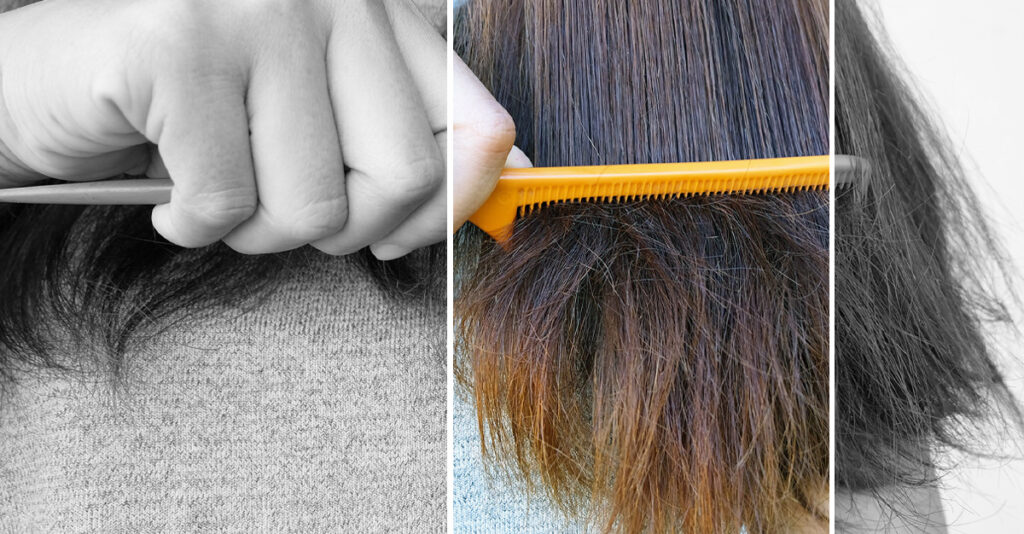
Fixing Frizz in Human Hair Wigs
If your human hair wig has already developed frizz, don’t worry! There are several effective methods for fixing frizz and restoring the smooth, natural appearance of your wig.
Detangling the Wig
Before proceeding with any frizz-fixing methods, it’s important to detangle the wig gently. Start by using a wide-toothed comb or a wig brush to remove any knots or tangles in the hair. Begin at the ends and work your way up to the roots, using gentle and slow strokes to avoid further damage.
Deep Conditioning
Deep conditioning is an excellent method for restoring moisture and smoothness to frizzy human hair wigs. Choose a deep conditioning treatment specifically formulated for human hair wigs and apply it generously to the strands. Leave it on for the recommended time, usually between 15 to 30 minutes, to allow the treatment to penetrate the hair shaft and soften the frizz.
Steam Treatment
A steam treatment can work wonders in eliminating frizz and restoring the natural texture of your human hair wig. There are different methods of steam treatment available, such as using a handheld steamer or a steam cap. The steam helps to open up the hair cuticles, allowing the conditioning treatment to penetrate deeply and hydrate the strands.
Anti-Frizz Serums and Oils
Anti-frizz serums and oils are excellent products to have on hand for addressing frizz in your human hair wig. Look for lightweight serums or oils specifically formulated for wigs, as they won’t weigh down the hair. Apply a small amount to your hands and distribute it evenly through the hair, focusing on the frizzy areas. These products help to smooth the cuticles and add shine to your wig.
Restyling the Wig
If your wig has developed frizz due to excessive heat styling, consider restyling it to minimize the appearance of frizz. Set your styling tools to lower heat settings and use a heat protectant spray before styling. You can straighten or curl the hair to create a new look while minimizing frizz. However, it’s important to avoid excessive heat styling to prevent further damage to the wig.
Consult with a Wig Specialist
If you’re facing persistent frizz issues with your human hair wig or if the frizz is severe, it’s advisable to seek professional help. A wig specialist can assess the condition of your wig and provide personalized recommendations for fixing and preventing frizz.
Seeking Professional Help
A wig specialist has the knowledge and expertise to evaluate the condition of your wig. They can identify any underlying issues causing frizz and provide solutions tailored to your specific wig. Whether it’s a matter of moisture imbalance, improper storage, or other factors, a professional can guide you in the right direction.
Getting the Wig Resized or Replaced
In some cases, frizz in a human hair wig may be due to improper sizing. If the wig is too tight or too loose, it can cause tension on the strands, leading to frizz and breakage. A wig specialist can assess the fit of your wig and determine whether it needs resizing or replacement. Ensuring the correct fit is crucial for maintaining the quality and appearance of your wig.
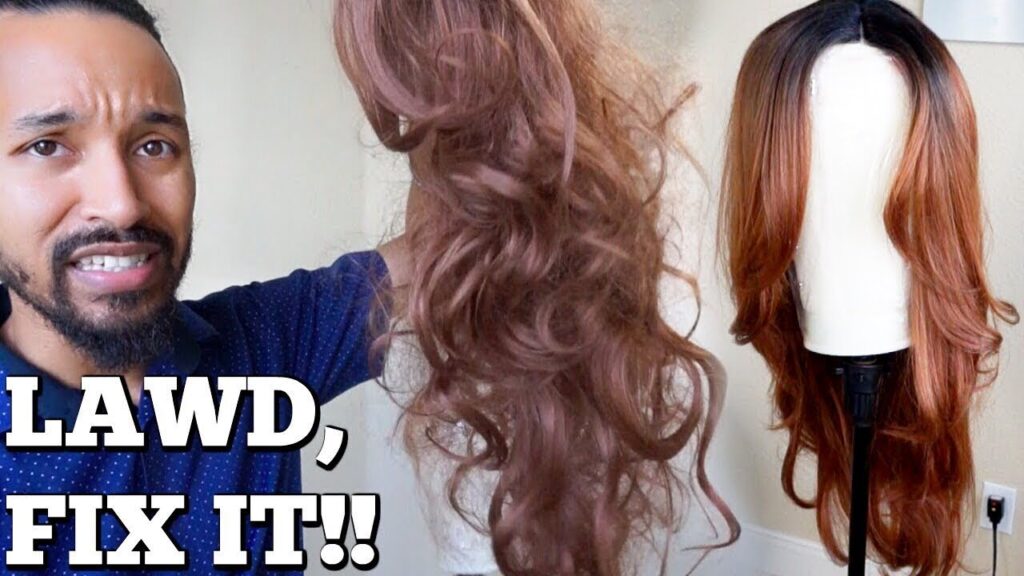
Tips for Caring for Human Hair Wigs
Proper care and maintenance are essential for prolonging the lifespan and maintaining the quality of your human hair wig. Here are some tips to help you care for your wig and minimize frizz:
Regular Washing and Conditioning
Regular washing and conditioning are vital to keep your wig clean, hydrated, and free from product buildup. Use a sulfate-free shampoo and conditioner specifically formulated for human hair wigs, and follow the instructions provided by the manufacturer. Avoid washing the wig too frequently, as this can lead to dryness and frizz. Aim for washing every 10 to 15 wears, or as needed.
Gentle Handling and Brushing
Human hair wigs are delicate, and rough handling can contribute to frizz. Always handle your wig with care, using gentle motions when brushing or styling. Avoid pulling or tugging on the hair, as this can cause breakage and frizz. Use a wide-toothed comb or a wig brush specifically designed for human hair wigs to detangle the hair gently.
Avoiding Excessive Heat Styling
While human hair wigs can withstand heat styling, it’s important to avoid excessive use of heat. Excessive heat can cause the strands to become dry and frizzy, diminishing the overall appearance of your wig. Limit the use of heat styling tools and opt for heat-free styling methods whenever possible. When heat styling is necessary, always use a heat protectant product to minimize damage.
How to Style a Human Hair Wig to Minimize Frizz
Styling your human hair wig in a way that minimizes frizz can help maintain its overall appearance and longevity. Here are some tips for styling your wig:
Choosing the Right Styling Tools
When styling your human hair wig, it’s important to choose the right tools to minimize frizz. Opt for high-quality styling tools that offer temperature control and gentle heat distribution. Ceramic or tourmaline-plated styling tools are excellent options, as they help to minimize heat damage and frizz.
Applying Heat Protectant Products
Before using any heat styling tools on your wig, always apply a heat protectant product. Heat protectant sprays or serums create a barrier between the heat and the hair, reducing the risk of damage and frizz. Apply the product evenly throughout the hair, focusing on the ends and areas prone to frizz. Allow the heat protectant to dry before using any styling tools.
Using Lower Heat Settings
When heat styling your human hair wig, use lower heat settings whenever possible. High temperatures can cause the hair to become dry, brittle, and frizzy. Start with the lowest heat setting and increase it gradually if needed. Be mindful of the amount of time the heat is applied to each section of the hair to prevent excessive heat exposure.
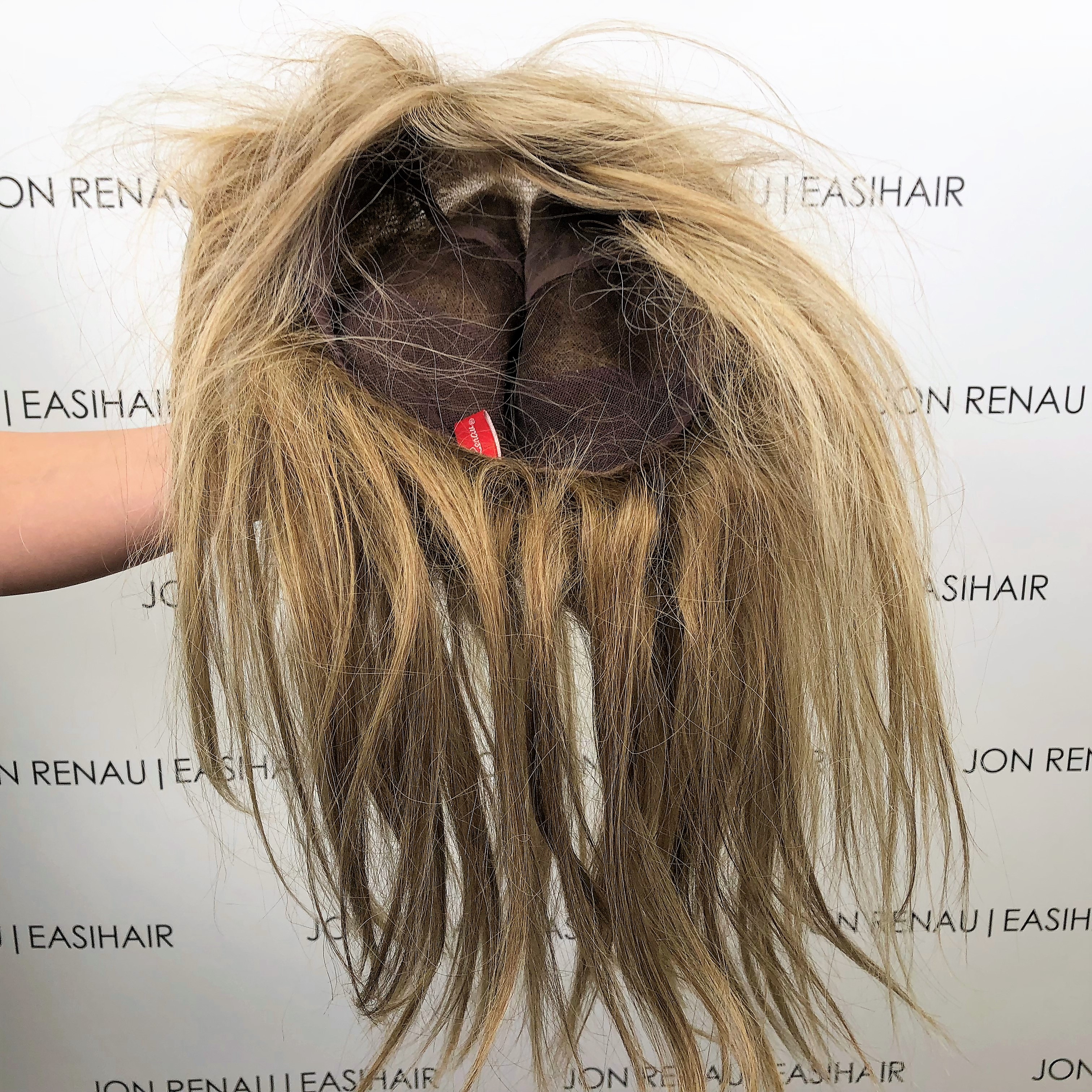
Alternative Solutions for Frizzy Human Hair Wigs
In addition to the aforementioned methods, there are alternative solutions that can help minimize frizz in human hair wigs. Here are a couple of options to consider:
Using a Wig Cap or Liner
Using a wig cap or liner underneath your wig can provide an additional layer of protection against frizz. The cap or liner helps to prevent the wig from directly coming into contact with your scalp or natural hair, reducing the transfer of oils and moisture that can contribute to frizz. Look for lightweight, breathable options that offer a comfortable fit.
Using a Wig Spray or Leave-In Conditioner
Wig sprays or leave-in conditioners formulated specifically for human hair wigs can be effective in minimizing frizz. These products often contain moisturizing ingredients that help to hydrate the strands and smooth out frizz. Apply the spray or leave-in conditioner to the hair and distribute it evenly using your fingers or a wide-toothed comb.
Preventing Frizz in Human Hair Wigs during Storage
Proper storage of your human hair wig is crucial in preventing frizz and maintaining its quality. Here are a couple of tips for preventing frizz during storage:
Storing the Wig Properly
When not in use, store your wig in a cool, dry place away from direct sunlight. Avoid storing it in areas with high humidity, as this can cause the hair to absorb moisture and become frizzy. Place your wig on a wig stand or a mannequin head to help maintain its shape and prevent tangling.
Using a Wig Stand or Mannequin Head
Using a wig stand or a mannequin head for storage is highly recommended. These tools provide a stable and secure place to keep your wig, ensuring proper ventilation and preventing the strands from getting tangled or flattened. It’s important to choose a wig stand or mannequin head that closely matches the size and shape of your head to maintain the proper fit of the wig.
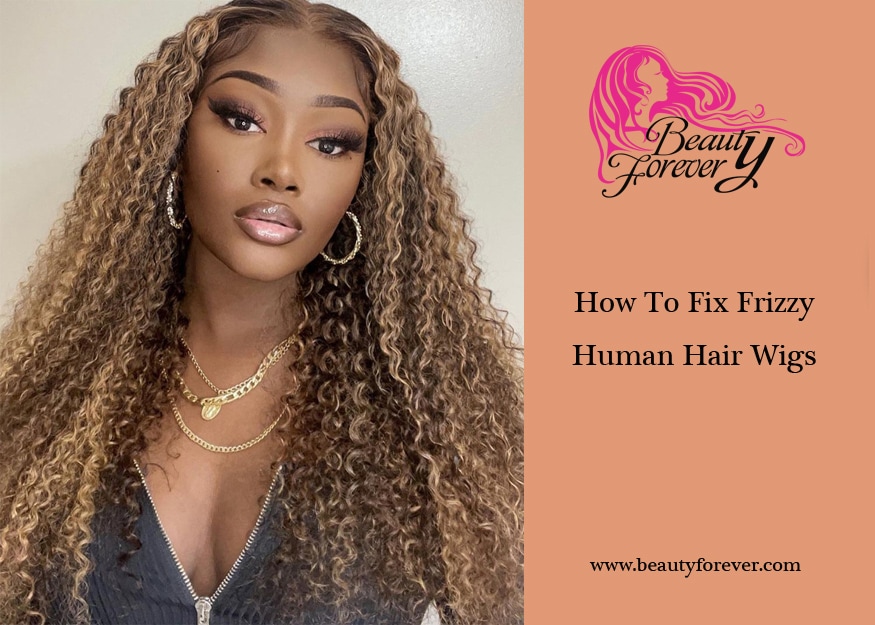
Maintaining the Quality of Human Hair Wigs
To maintain the quality of your human hair wig and prevent frizz, it’s essential to adopt a regular maintenance routine. Here are some tips:
Regular Trims and Maintenance
Just like natural hair, human hair wigs benefit from regular trims to prevent split ends and maintain a healthy appearance. Schedule regular visits to a wig specialist or stylist for trimming and maintaining the shape of your wig. This helps to minimize frizz and keep the strands looking refreshed.
Avoiding Chemical Treatments
Chemical treatments, such as bleaching or perming, can cause significant damage to human hair wigs and lead to frizz. Avoid using harsh chemicals or dyes on your wig, as they can strip the hair of its natural moisture and cause it to become dry and frizzy. Opt for alternative styling methods, such as temporary hair color sprays or wigs that are already dyed.
Protecting the Wig from Environmental Damage
Protecting your human hair wig from environmental damage is crucial in maintaining its quality and preventing frizz. When venturing outdoors, consider wearing a wig cap or using a scarf or hat to shield the wig from direct sunlight, wind, and humidity. These protective measures help to minimize moisture absorption and protect the hair from the elements.
Conclusion
Human hair wigs offer an incredible way to achieve various hairstyles, provide solutions for hair loss, and enhance your overall look. However, frizz can pose a significant challenge in maintaining the quality and appearance of your wig. By understanding the causes, effects, and prevention methods for frizz, as well as effective techniques for fixing it, you can ensure that your human hair wig stays smooth, natural-looking, and beautiful for as long as possible. Additionally, consulting with a wig specialist and following proper care and styling techniques will help you make the most of your human hair wig and enjoy its versatility and style possibilities.
